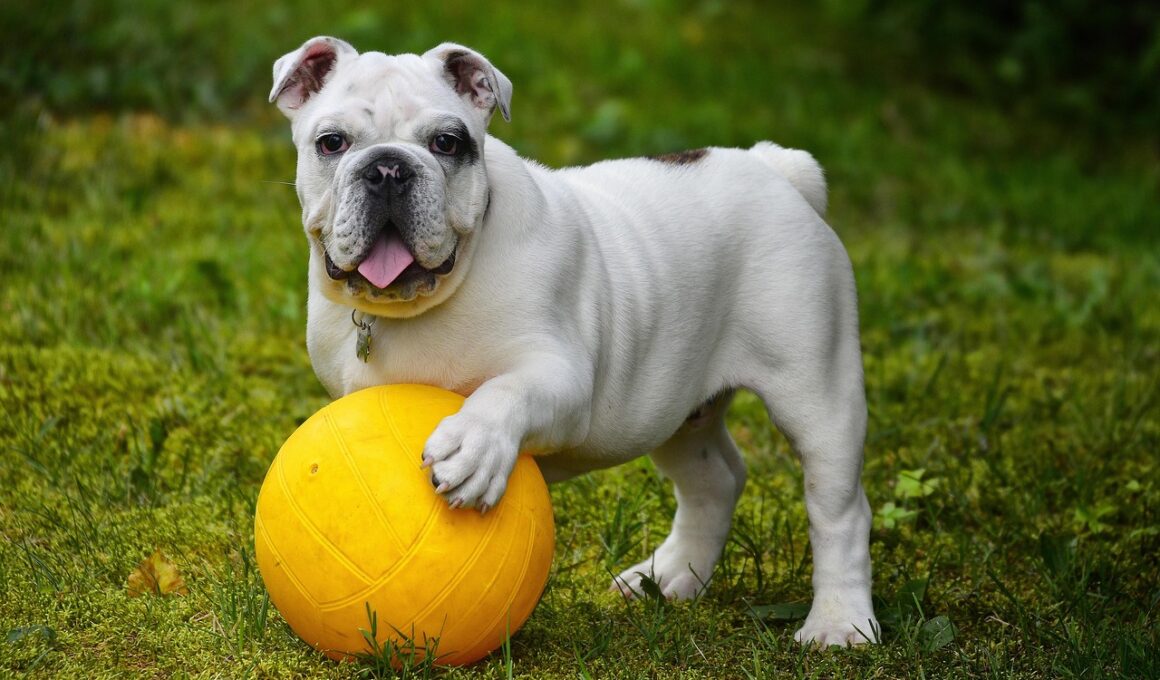Signs Your Dog is Happy: A Body Language Checklist
Understanding your dog’s body language is essential for nurturing a loving relationship with your pet. Dogs express their feelings non-verbally through various signals. Recognizing signs of happiness can deepen your connection with your furry friend. When your dog is happy, you will observe a wide array of behaviors that reflect its joy. One typical sign is a relaxed posture. When dogs feel content, their bodies are loose, not tense. They might flop down or roll over, inviting a belly rub, indicating pure bliss. Additionally, look for playful behavior; a happy dog often engages in playtime, wagging its tail excitedly and play-bowing. Their tail movements are especially revealing. A wagging tail typically signifies excitement, especially if it’s moving rapidly. Lastly, the energy a happy dog displays, whether through zoomies or playful barks, is infectious. If a dog proudly engages in positive behaviors, it likely feels secure and joyful in its environment. Thus, watching for these subtle yet clear indicators can enhance your understanding of your dog’s emotions and ensure their overall well-being.
Another classic sign of a happy dog is frequent tail wagging. When your dog’s tail is wagging, it indicates eagerness and excitement. The height and speed of the wagging tail offer additional context. A high, fast wag usually signifies overwhelming joy, while a slower wag might suggest a more relaxed state. Pay attention to how your dog’s tail interacts with its body; if it’s wagging in rhythm with an active and playful demeanor, you can feel assured of your pet’s happiness. Furthermore, observe your dog’s facial expressions. Relaxed ears and an open mouth can reflect a serene and satisfied state of mind. On the contrary, if their ears are pinned back or they show signs of aggression, this is a different story. Don’t overlook playful barking; when accompanied by a wagging tail or play bow, this usually means your dog is enjoying itself! Dogs may also initiate play by bringing toys or nudging your hand. These behaviors reflect not just happiness but a desire for interaction. Together, these observations create a clear picture of your dog’s emotional state and reinforce your bond.
Physical affection is another important sign of a happy dog. It may seek out your attention through nudging or leaning against you. When dogs seek connection, it’s a sure indication they feel secure and joyful. Dogs may also exhibit a behavior known as “play bowing,” where they lower their front legs while keeping their back end high. This position is an invitation for play and signals enthusiasm. Listening to a dog’s vocalizations can also give insights into its emotional state. Happy dogs will often bark playfully or happily whine, expressing excitement. Conversely, growling or barking in distress indicates discomfort. Offering your dog affection, such as belly rubs, often encourages them to relax and enjoy the moment. The level of eye contact matters too; a happy dog will maintain soft, gentle eye contact, not staring intently with a tense expression. Respect their boundaries by responding to their cues, such as turning away or lowering their head when they’re not in the mood. Acknowledging their feelings promotes a deeper, mutual understanding. With patience and awareness, you can cultivate a joyful environment for your four-legged companion.
Recognizing Playfulness
Another indicator of your dog’s happiness is its energy level during playtime. A joyful dog exhibits enthusiasm through excited jumps, playful barking, and zoomies—spontaneous bursts of energy where they race around, seemingly in pure bliss. During these moments, you’ll notice how they interact with their toys, often tossing or chasing them with eagerness. Playtime is not just a physical outlet; it enriches their mental life too! Observe how they include you in their games by gently bringing a ball or toy, indicating a desire for companionship. The excitement displayed during fetch or tug-of-war reinforces their happiness, showcasing strong bonds between you and your pet. Don’t forget about body language; during play, the dog’s tail will be in motion, and their overall demeanor is relaxed and inviting. Engaging in games strengthens social skills and enhances the joy experienced for both you and your furry friend. Additionally, remember that each dog has its distinct play style, which can vary by breed and personality. Be attentive to what excites them, ensuring the activities are enjoyable, bonding moments filled with laughter and love.
Vocalizations can reveal a great deal about your dog’s emotional state. Happy dogs often make joyful sounds, including playful barks and excited whines. If your dog’s vocalizations are light and energetic without signs of distress or aggression, they are likely expressing happiness. Engaging in conversation with your dog can also prompt joyful vocalizations; dogs often respond to your tone and enthusiasm. When your dog barks happily, it can indicate their eagerness to interact or play. Additionally, happy tail-wagging accompanied by these sounds signifies that your dog is enthusiastic about the moment. Remember that vocalizations are part of their communication strategy, and a happy dog feels comfortable expressing emotions freely. Keep in mind that each dog has its distinct voices; some may vocalize more than others. The goal is to correlate vocalizations with their overall body language and environment. Building a connection involves how well you understand these signals and respond accordingly, contributing to your dog’s happiness and well-being. By fostering a positive reinforcement environment, you can encourage more joyful communications from your dog. Understanding vocalizations adds another layer to your dog’s emotional insight.
The Importance of Body Language
The significance of understanding your dog’s body language cannot be overstated. Dogs rely heavily on non-verbal signals, often communicating feelings through specific movements and postures. When dogs exhibit confidence and happiness, they display relaxed muscles, a pleasant demeanor, and engaged behavior. Conversely, signs of anxiety or discomfort are displayed through stiff movements, tucked tails, and lowered heads. Interpreting these signals effectively fosters deeper connections between dogs and their owners. Being aware of a dog’s body language allows you to respond to their mood and feelings adequately. Celebrating happy moments together enhances your pet’s emotional well-being. Observing how your pet reacts to new situations can inform you about their happiness or discomfort. When socializing your dog, for instance, responding to their cues helps build confidence and encourages positive experiences. Socialising strengthens their emotional foundation and nurtures happy and healthy behaviors. Additionally, it is vital to utilize positive reinforcement in training; this creates trusting and joyous interactions. By showing genuine interest and understanding of your dog’s cues, you enhance mutual respect and love, ultimately crafting a harmonious relationship that both pet and owner treasure.
In summary, recognizing the signs of a happy dog through body language is essential for nurturing your relationship. You can bolster your dog’s emotional well-being by paying attention to tail wags, relaxed postures, and playful behaviors. Gaining insight into your dog’s expression creates lasting bonds. Engaging in regular playtime, using positive reinforcement, and understanding vocal signals can encourage healthy interactions. Celebrate joyful moments together, fostering happiness through engaging activities and affection. Remember that each dog has unique ways of expressing their feelings, so consistent observation is necessary to grasp subtleties. Happy dogs exhibit behaviors that emphasize their joy and security, offering you opportunities to create shared experiences. A well-cared-for dog thrives emotionally, reflects love, and contributes positively to your life. Communicate effectively by understanding your dog’s body language, ensuring it feels secure and cherished. This approach benefits your pet and enriches your life with their unwavering love and companionship. Together, strive for a responsible partnership, where comprehension and joy flourish, reflecting the incredible bond shared. Understanding your dog is an ongoing journey that leads to a fulfilling pet-owner experience, filled with love, trust, and happiness.


